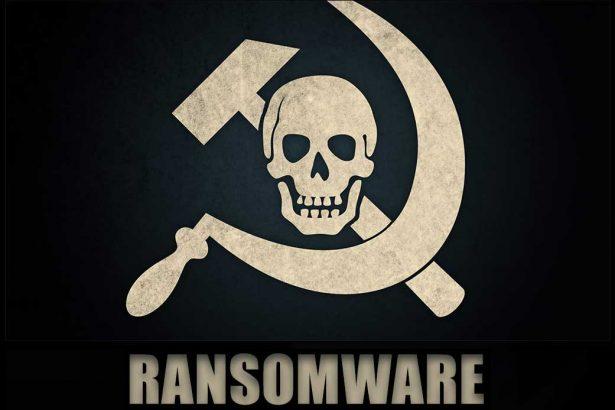Ransomware is a particularly malicious type of malware that locks or encrypts files on a victim’s computer, demanding a ransom for their release. Unlike other forms of malware that may simply corrupt or steal data, ransomware directly impacts users by making their files inaccessible. The attackers then demand payment, typically in cryptocurrency, to provide a decryption key or to restore access to the locked files. The threat is severe, as it can cause significant data loss and disruption, especially for businesses and individuals who rely heavily on their data.
Ownerd Ransomware: A Specific and Dangerous Threat
One of the latest threats in the ransomware landscape is the Ownerd Ransomware. This particular ransomware operates by infiltrating a user’s system and encrypting valuable files, rendering them inaccessible without the decryption key that the attackers possess. Once it has successfully encrypted the files, it appends a distinctive extension, such as “.ownerd,” to the file names, which signals to the user that their files have been compromised. For instance, a file named “document.pdf” would be renamed “document.pdf.ownerd” after encryption.
How Ownerd Ransomware Infects Systems
Ownerd ransomware typically gets installed on a system through various means, such as phishing emails containing malicious attachments, downloading software from untrusted websites, or exploiting vulnerabilities in outdated software. Once installed, it quickly begins to execute its payload, starting with scanning the system for a wide range of file types, including documents, images, databases, and more. After locating these files, the ransomware encrypts them using a robust encryption algorithm, which makes it nearly impossible to recover the files without paying the ransom.
The consequences of this ransomware are severe: all the encrypted files become unusable, causing potential loss of crucial data and operational downtime. Moreover, the ransomware modifies system settings to make it difficult for the user to recover their files or regain control of their system without paying the ransom.
The Ransom Note
After the encryption process is complete, Ownerd ransomware leaves a ransom note on the infected system. This note is usually placed in each folder containing encrypted files and on the desktop, demanding payment in cryptocurrency for the decryption key. The note typically provides instructions on how to purchase cryptocurrency, where to send it, and how to communicate with the attackers to receive the decryption tool. The note may also contain threats, such as a deadline for payment, after which the decryption key will be destroyed, making the files permanently inaccessible.
The primary purpose of ransomware like Ownerd is financial gain. By holding the victim’s data hostage, the attackers hope to pressure the victim into paying the ransom. However, paying the ransom does not guarantee that the attackers will provide the decryption key or that they won’t attack the victim again in the future.
Text presented in this message:
Email 1:
ownerde@cyberfear.com
Email 2:
ownerde@cock.li
Send messages to both emails at the same time
So send messages to our emails, check your spam folder every few hours
ID: –
If you do not receive a response from us after 24 hours, create a valid email, for example, gmail,outlook
Then send us a message with a new email
Symptoms of Ownerd Ransomware Infection
There are several indicators that a computer might be infected with Ownerd ransomware:
- Inability to Open Files: If files suddenly cannot be opened and have a new extension like “.ownerd,” this is a strong indicator of ransomware infection.
- Unusual System Behavior: Slow performance, frequent crashes, or an inability to access certain system settings may indicate the presence of ransomware.
- Ransom Note Appearance: The appearance of a text or HTML file with ransom demands in multiple directories or on the desktop is a clear sign.
- File Name Changes: All files may have their original names changed to include a “.ownerd” extension.
To confirm the presence of this ransomware, users can use various detection names, including but not limited to:
- Trojan.Ransom.Ownerd
- Ransom:Win32/Ownerd.A
- HEUR:Trojan.Win32.Generic
Similar Ransomware Threats
In addition to Ownerd, there are several other ransomware families that users might encounter, such as:
- Ryuk: A highly targeted ransomware known for attacking large organizations and demanding significant ransoms.
- Dharma: Known for encrypting files and appending various extensions like “.dharma,” “.cezar,” etc.
- Sodinokibi (REvil): A notorious ransomware used in high-profile attacks, often targeting MSPs and large enterprises.
Comprehensive Removal Guide for Ownerd Ransomware
Removing Ownerd ransomware from a system requires a careful, step-by-step approach:
Step 1: Isolate the Infected System
To prevent the ransomware from spreading to other devices on the network, disconnect the infected computer from the internet and any local networks immediately.
Step 2: Enter Safe Mode
Restart the computer in Safe Mode with Networking to prevent the ransomware from running on startup. This can be done by pressing the F8 key during startup or through the system’s recovery options.
Step 3: Use an Anti-Malware Tool
Download and install SpyHunter. This tool is designed to scan, detect, and remove various forms of malware, including ransomware.
- Run a full system scan with SpyHunter to identify and remove the ransomware.
- Follow the on-screen instructions to remove any detected threats.
Step 4: Restore Your Files
If you have backups of your files, now is the time to restore them. Ensure that the ransomware has been completely removed before restoring to avoid re-infection.
Step 5: Decrypting Files
If you do not have backups and choose not to pay the ransom, you can try using ransomware decryption tools available online, though their success varies depending on the ransomware type.
Preventing Future Infections
To prevent future ransomware infections, follow these best practices:
- Regular Backups: Always keep your data backed up on external drives or cloud services.
- Use Updated Security Software: Ensure that your anti-malware software is always up to date to protect against the latest threats.
- Be Cautious with Emails: Avoid opening email attachments or clicking on links from unknown or untrusted sources.
- Update Your Software: Regularly update your operating system and all software to patch any security vulnerabilities.
- Enable Strong Security Settings: Use strong, unique passwords and enable two-factor authentication where possible.
Promoting the anti-malware tool SpyHunter is crucial for users seeking a reliable solution to detect and remove Ownerd ransomware. We highly recommend downloading SpyHunter and running a free scan to identify any potential threats on your computer.




